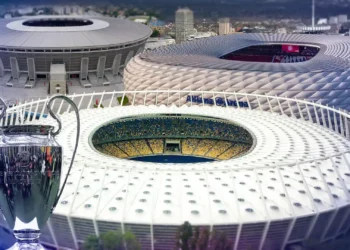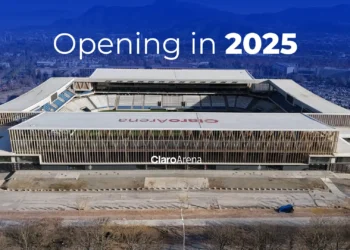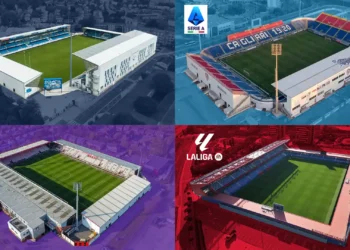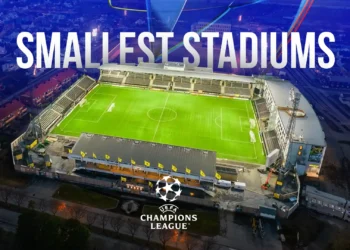When we think of football stadiums, we imagine roaring crowds, unforgettable nights, and a place where the passion of the game comes alive. But not every stadium tells this story. Across the world, there are massive arenas that look spectacular on the outside but stay largely empty on matchdays. These stadiums often become a financial burden, with maintenance costs far outweighing the ticket sales and revenue they generate. Many were built for major tournaments or political prestige, but today they struggle to find a purpose.
Here are some of the most famous “empty stadiums” that tell the other side of football’s grand projects.
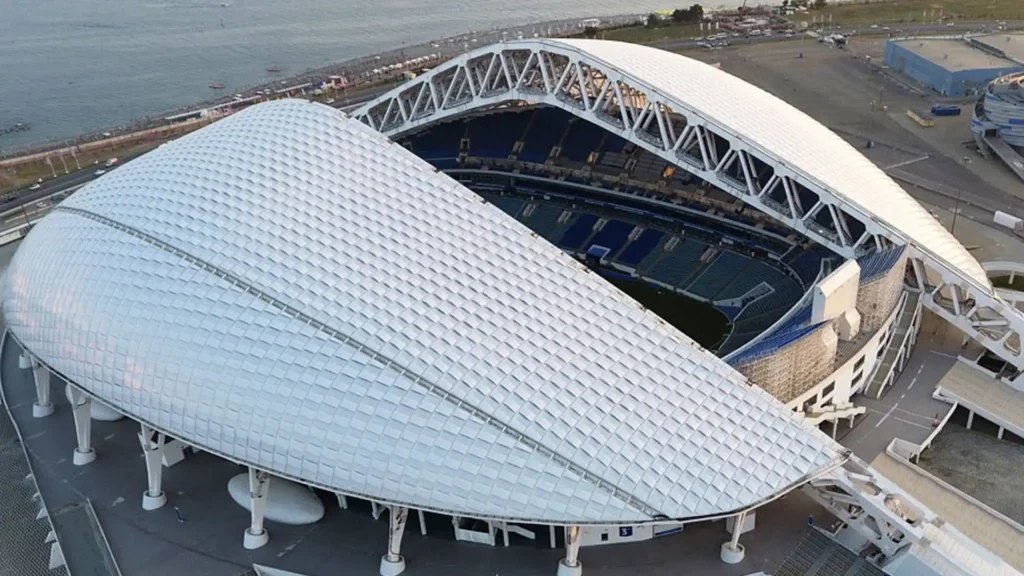
Fisht Olympic Stadium – Sochi, Russia
Built for the 2014 Winter Olympics, this 41,000-seat stadium became a World Cup venue in 2018. But once the spotlight faded, reality struck. The local club that uses it only attracts around 6,000 fans on average, leaving most of the seats unoccupied. The high maintenance costs are covered by taxpayers, and its location in Sochi—far from Russia’s major football hubs—makes it even harder to fill.

Kaliningrad Stadium – Russia
Constructed for the 2018 World Cup with a capacity of 35,000, Kaliningrad Stadium quickly became a symbol of poor planning. Built on marshland, it even started sinking at one point, with rescue work costing around $1 million. With limited football culture in the region and no major club to consistently draw crowds, the stadium is now used very little.
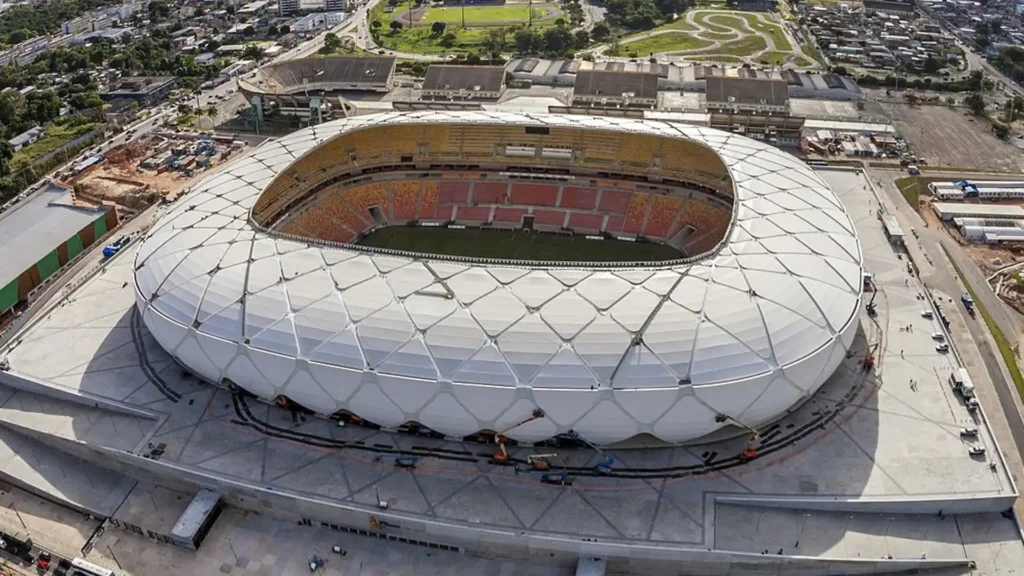
Arena da Amazônia – Manaus, Brazil
Perhaps the most infamous example, this 40,000-seat stadium was built for the 2014 World Cup in the heart of the Amazon rainforest. The local football scene is tiny, with matches drawing as few as 1,000 spectators. Meanwhile, maintenance costs reach $150,000–200,000 per month—an incredible expense for such little use. Its remote location makes it impractical for fans and teams alike, turning it into a textbook “white elephant.”
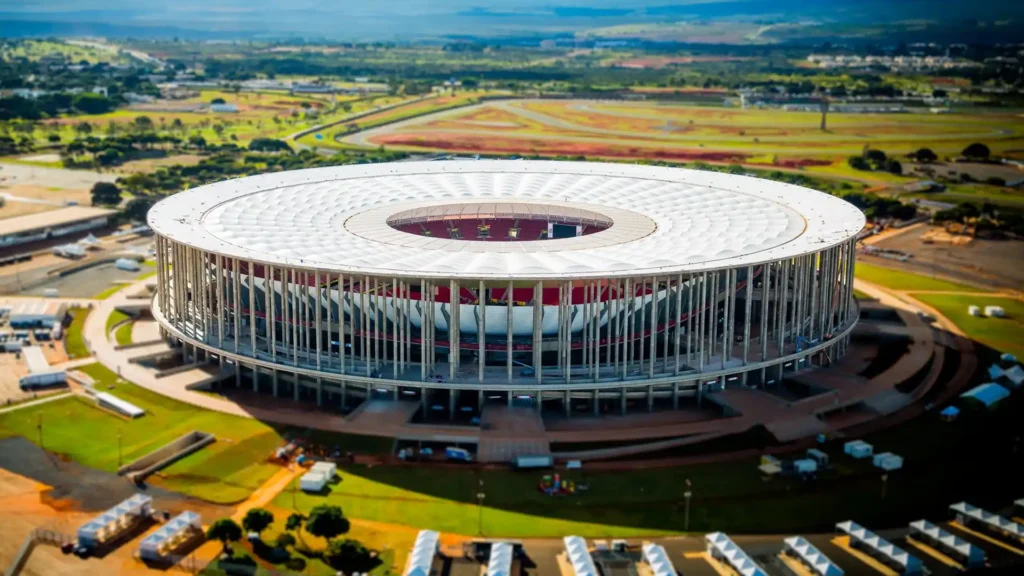
Estádio Mane Garrincha – Brasília, Brazil
With 72,000 seats, this stadium was Brazil’s most expensive World Cup project in 2014. Today, it rarely hosts matches and has been reduced to renting out its parking lot for buses to generate minimal income. Even then, the earnings don’t come close to covering the massive monthly costs. Built in a city without a strong football tradition, it has become more of a monument than a home for the game.
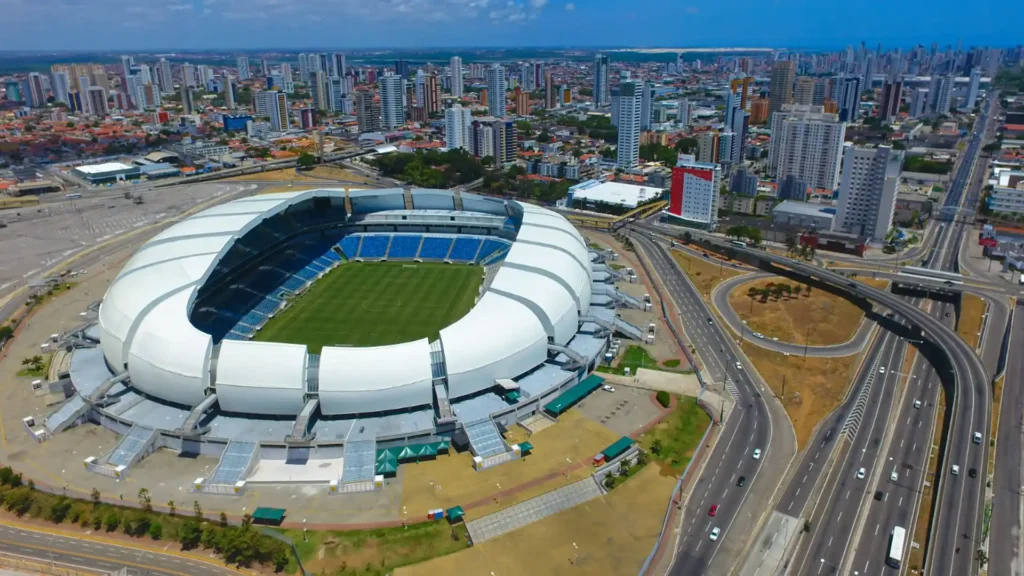
Arena das Dunas – Natal, Brazil
Another 2014 World Cup venue, Arena das Dunas holds around 31,000 fans but is almost always half-empty. With little football demand, it now relies on hosting weddings, concerts, and private events to survive. It’s a reminder that even beautifully designed stadiums can quickly lose purpose once the spotlight of international tournaments fades.
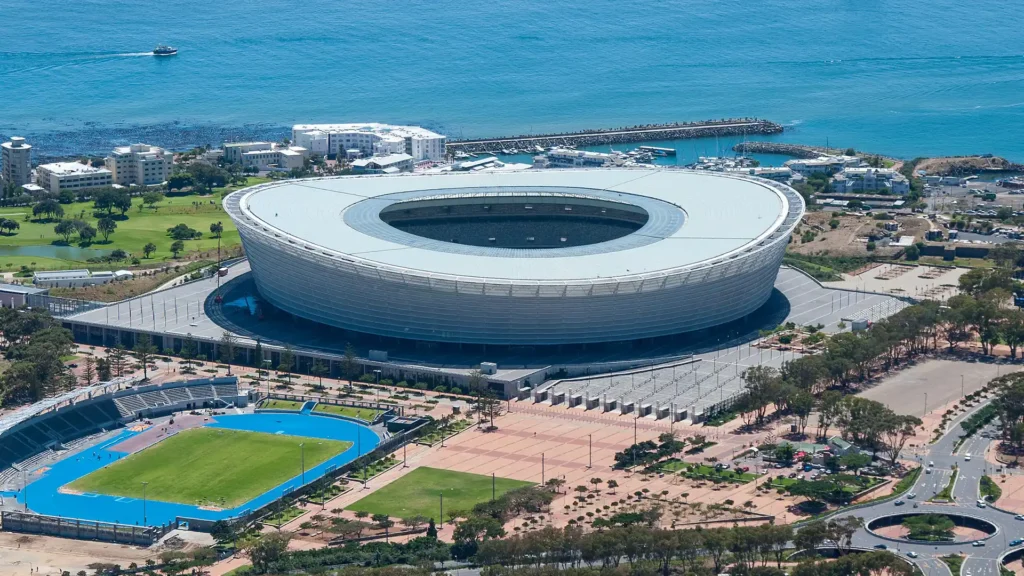
Cape Town Stadium – South Africa
Built for the 2010 FIFA World Cup, Cape Town’s stunning 55,000-seat stadium is located far from the city’s traditional football base. Despite its beauty and iconic setting, it has struggled to attract crowds and has never been financially sustainable. Some have even called for its demolition, as its upkeep costs millions every year while offering little return.
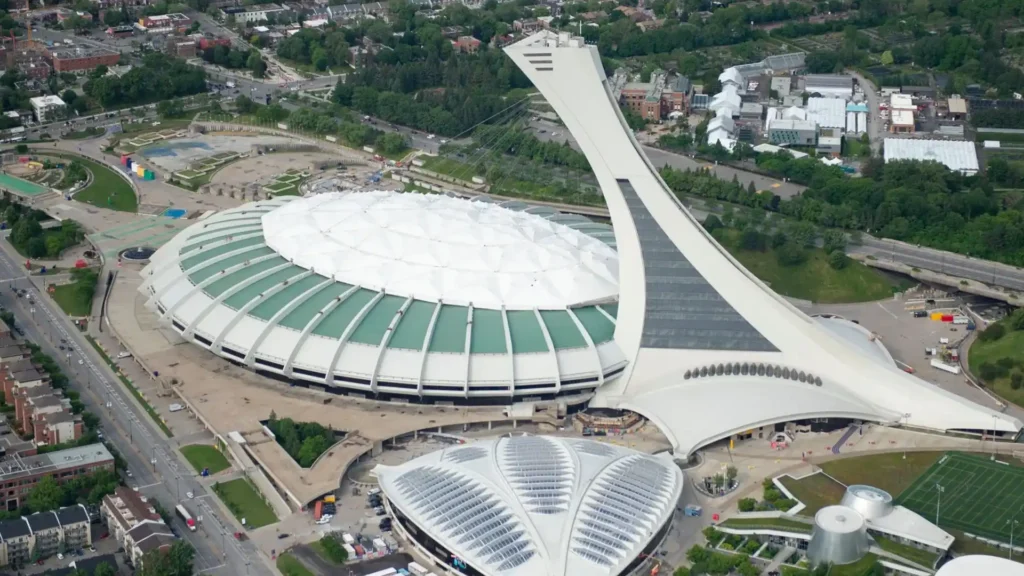
Montreal Olympic Stadium – Canada
Known as the “Big Owe” because of its enormous debts, Montreal’s Olympic Stadium was built for the 1976 Olympics with a capacity of 56,000. Construction overruns left the city with debt for decades. Today, it rarely hosts major football or sporting events, serving more as a reminder of poor planning than a functional stadium.
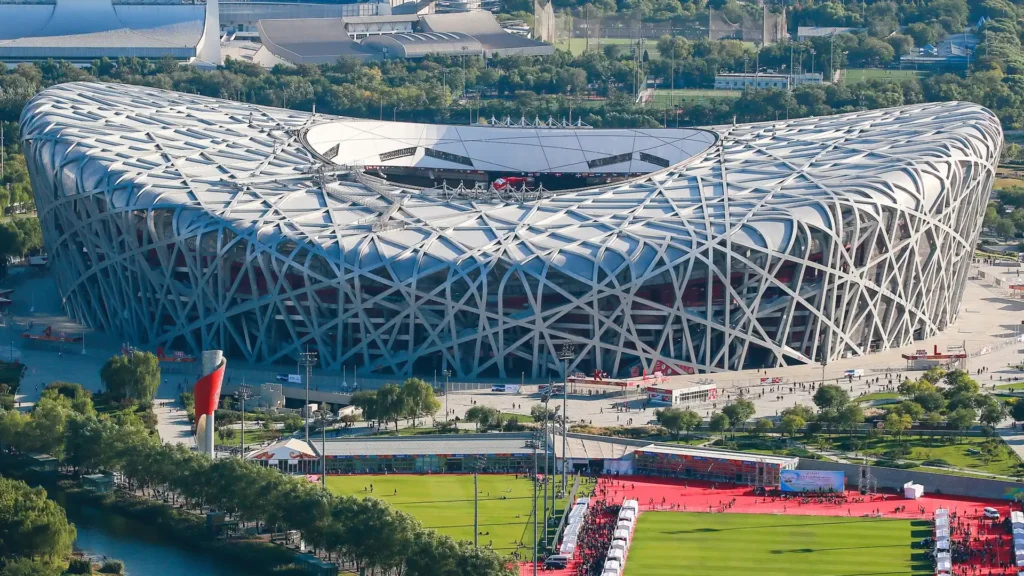
Beijing National Stadium – China
One of the most iconic stadiums in the world, the Bird’s Nest was built for the 2008 Beijing Olympics with 80,000 seats and a futuristic design by Herzog & de Meuron. While stunning, its annual maintenance costs are extremely high, and only a handful of events are held there each year. Without regular football or sports usage, it remains largely symbolic—more of a tourist attraction than a functioning stadium.
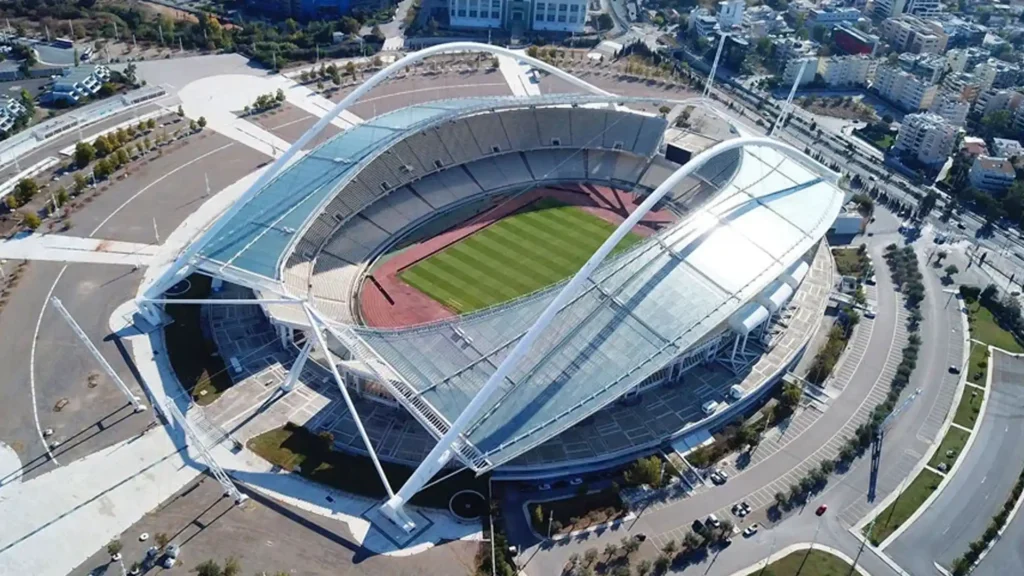
Athens Olympic Stadium – Greece
Originally built in 1982 and extensively renovated ahead of the 2004 Athens Olympics, this 70,000-seat stadium became the home ground of Panathinaikos, AEK Athens, and Olympiacos at different times. It even hosted three Champions League finals. But in recent years, it fell into disrepair and was closed in 2023 due to safety concerns with its roof. It reopened in 2024 after modifications, but many of its facilities remain abandoned, showing how Olympic investments can quickly fade.
Why Do These Stadiums Stay Empty?
- Oversized projects: Built too big for the local football culture.
- Remote locations: Far from city centers or football-loving populations.
- Event-driven planning: Constructed for short-term tournaments without long-term vision.
- High maintenance costs: Running these stadiums can cost millions each year, while ticket sales bring in little.


